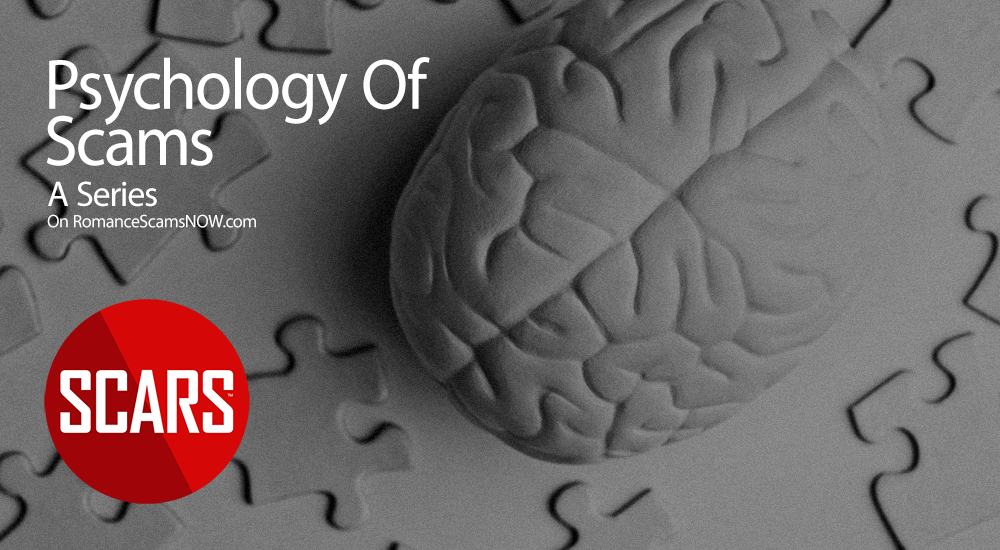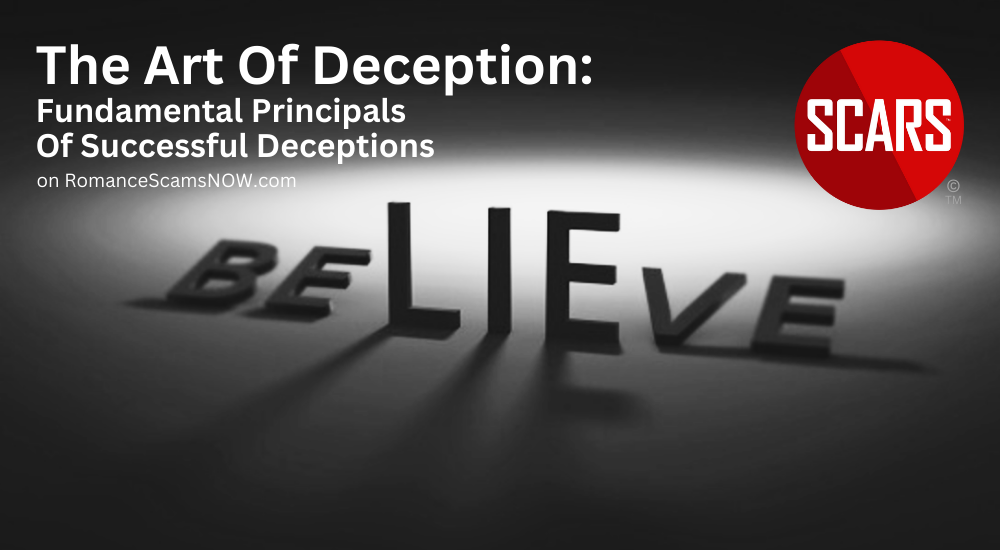Why Victims Do Not Recognize That The Videos That They Are Watching Are Being Faked?
About Victim Engagement With Fake Videos
It would seem obvious that the videos provided by scammers would be easy to confirm as fake, yet most victims do not recognize them as frauds. This is results in victims believing they are really seeing or talking with the person pictured in the video. As the scam progresses this makes it much harder to extract a victim from these scams. Even after they are convinced it is a scam, long-term lingering doubt often remains.
There are two main reasons for this and it relates to the videos having or not having audio.
- In the case of video not having any audio, there is nothing that directly exposes the video as being prerecorded and played back. All the victim knows is they are seeing a video, being told it is live, and they are reading the chat that seemingly goes along with it. The victim is told there are audio problems, so they are expecting discontinuity and therefore accept that it is real. They already know that the lip movement will not match what they are reading, so it is not an issue.
- However, when there is audio there is a much more complex set of phenomena taking place where the victim deceives themselves about the realness of the video. This self-deception is a combination of many effects caused by their cognitive biases, habituation to dubbed movies, and their suspension of disbelief.
The question has to be asked: why do most victims fail to recognize they are seeing faked scammer videos?
The simple answer is that they do not want to. We do not mean it is a conscious choice, but rather their own biases and psychology conspire to prevent it. Partly is it how the brain is wired and partner it is that the victim has so much invested emotionally by the time they are typically shown such videos that they are unable to see them as scammer videos.
There are four main reasons (and a thousand minor ones):
- Cognitive Distortion (especially Confirmation Bias) – the victim sees what they want to see
- Emotional Investment in the believed real relationship (even though it is fake)
- Habituation and Threshold of Acceptability – see below
- Suspension of Disbelief – see below
What is Habituation and Threshold of Acceptability
This means we become accustomed to seeing movies (and videos) where the lips do not follow the sound and we regularly accept it as nothing strange or out of the ordinary.
According to Zabalbeascoa’s research on this subject (1993), his view that “dubbing and subtitles are a question of habit and taste” still applies decades later. Research shows that audiences seem to prefer the translation method they are most familiar with. This may also explain the harsh criticism directed at dubbing by scholars and professionals who have not been brought up with this practice, which has been described as “a kind of cinematic netherworld filled with phantom actors who speak through the mouths of others.” However, important as it may be, the notion of habit has often been used as a blanket argument that prevents us from having a more in-depth knowledge of the factors that account for the dubbing viewers’ acceptance of this type of translation.
A useful concept in this regard is Gunning’s (2003) idea of habituation. Referring to the first exposure to new technologies, and thus applicable to film, Gunning (as well as videos) explains that audiences go from wonder to knowledge to habituation and automatism, with the outcome of this habituation being “to render us unconscious of our experience.” Wonder, “the first of all passions” draws our attention to the new technology as something that astounds us by performing in a way that seemed unlikely or magical before. This gives way to curiosity to understand how it works (knowledge), habituation after frequent usage and finally
unconscious automatism.
If consumed from a very early age, the sense of wonder is not necessarily followed by knowledge. When they are first exposed to film, children normally have no knowledge of the artifice involved in cinematic fiction, which means that they go straight from wonder into habituation and automatism. By the time they learn about the prefabricated nature of cinema, film viewing has already settled as an unconscious experience whose enjoyment requires not questioning the reality of what they are seeing, that is, suspending disbelief. Crucially, dubbing audiences are exposed to both original and dubbed films from an early age. They are astounded by the magic of cinema (wonder), regardless of whether or not it is dubbed. The artifice of dubbing (the mismatch between audio and visuals, the almost inevitable lack of total synchrony, even in high-quality dubbing, etc.) is overlooked along with the artifice of cinematic fiction, as they go from wonder to habituation and unconscious automatism. By the time dubbing audiences learn about dubbing (just as when they learn about film), they have already internalized how to watch it without questioning it. In other words, getting used to dubbing, when it happens at an early age, is simply part of the (unconscious) process of getting used to film.
Closely linked to the notion of habit or habituation is that of tolerance. Even if a particular audience is used to dubbing, there is a tolerance threshold that must be respected with regard to at least two of the key dubbing constraints: synchrony and the naturalness of the dialogue. According to Rowe (1960: 117), this tolerance threshold may vary across countries:
- American and English audiences are the least tolerant, followed closely by the
Germans. - The French, staunch defenders of their belle langue and accustomed
to the dubbing process since those early days when rudimentary techniques made
synchronization a somewhat haphazard achievement, are far more annoyed by
slipshod dialogue than imperfect labial illusions. - To the Italians, the play’s the thing and techniques take the hindmost, as artistically they should.
A more updated take is provided by Chaume, who refers to a “threshold of acceptability” that should not be overstepped, for which it is necessary to adhere to a series of quality standards: compliance with synchronization norms, the writing of credible and realistic dialogue, coherence between what is heard and what is seen, fidelity to the source text, technical adequacy of sound recording and appropriate performance and dramatization of the dialogue. If these quality standards are met, the illusion of authenticity, or the illusion of an illusion involved in dubbing, can still be maintained, thus allowing the dubbing audience to suspend disbelief and become immersed in the fiction.
So how does this apply to videos that scam victims see?
We are all so accustomed to seeing and accepting dubbed videos and movies that we do not automatically react when the voice and the image are out of sync. This contributes to the acceptance of fake videos. Plus when compounded with things like confirmation bias and wanting to believe, it makes the fake real.
The Suspension of Disbelief
Another factor in victims believing fake videos – or even photos – is the suspension of disbelief.
The notion of suspension of disbelief was originally coined in 1817 by the poet and philosopher Samuel Taylor Coleridge (in Parrish 1985: 106), who suggested that if a writer could provide a fantastic tale with a “human interest and a semblance of truth”, the reader would suspend judgment.
In the Journal of Specialised Translation Issue 33 – January 2020: concerning the plausibility of the narrative. This term has since been used for film and audio-video technology. It applies it to subtitling, calling it a “contract of illusion” or tacit agreement between the subtitler and the viewers where the latter agree to believe “that the subtitles are the dialogue, that what you read is actually what people say.” In his definition of suspension of disbelief, Chaume (2013: 187) makes explicit reference to dubbing: a term referring to the reader/viewer’s ability or desire (or both) to ignore, distort or underplay realism in order to feel more involved with a videogame, a film, or a book. It might be used to refer to the willingness of the audience to overlook the limitations of the medium (for example, that a film is dubbed), so that these do not interfere with the acceptance of those premises.
Closely related and also applied to dubbing are the notions of suspension of linguistic disbelief, i.e. “the process that allows the dubbing audience to turn a deaf ear to the possible unnaturalness of the dubbed script while enjoying the cinematic experience,” and that of suspension of paralinguistic disbelief, the same process applied to the unnatural intonation sometimes found in dubbed films. According to these views, then, the suspension of disbelief works at different levels to allow viewers to be immersed in the dubbed fiction without being distracted by its prefabricated nature or by the potential lack of naturalness of its language or intonation.
From a psychological standpoint, the notion of suspension of disbelief is normally tackled as one more factor in a complex set of elements used to
describe our involvement in different kinds of narratives. I can be explained that in order to engage with a story, viewers must understand it and become immersed in it. In turn, this requires two prerequisites: interest in the film experience, and suspension of disbelief or willingness to participate in it. Comprehension does not involve understanding every element in a film plot but just enough for the viewers to create and update mental representations of the fictional world, which, as per Johnson-Laird’s (1983) Mental Model Theory, leads to comprehension. The immersion or psychological involvement with the narrative is facilitated by feelings of flow when the viewer is absorbed in the act of watching fiction; transportation, when “all mental systems and capacities become focused on events occurring in the narrative”; presence, the feeling of being in a mediated space different to where your body is located; and finally the viewers’ disposition towards the characters. While it is harder to argue, as per identification theories, that viewers experience the events on screen as if they were characters (which would mean that they have the urge to phone the police if a character is in danger), disposition theories explain how viewers develop effective propensity towards the characters, depending on whether they like them more or less or feel closer to or further away from them.
Facilitators of Engagement:
It would thus seem that, when first exposed at an early age to dubbed films, viewers may feel a sense of wonder that leads to habituation and to an
automatic and unconscious engagement with the dubbed fiction, facilitated by their ability to suspend disbelief, their interest in the story, some degree of comprehension of the plot, and a sense of immersion that involves feelings of flow, transportation, and presence.
This process of engagement is not affected by the discovery, years later, of the artifice involved in dubbing, since by then this path to engagement has already been unconsciously internalized as part and parcel of the process of watching a film. However, the question remains as to whether this process can explain why and how dubbing viewers do not seem to be put off by the general discrepancy between audio and visuals or by the lack of synchrony in the dubbing actors’
lip movements, which are likely to occur to a greater or lesser degree even in high-quality dubbed films. The McGurk effect, tackled in the next section, would suggest otherwise.
We believe that these factors combined with an intense emotional desire for connection with the face in the photos and video, and the developing relationship essentially blind the scam victim to the truth about the fact that the video (or photos) are faked.
Summary
These factors contribute to a false certainty that the victim is actually seeing a real person.
What will make this infinitely worse now and in the future is the instruction of AI-driven Deepfake technology. This Deepfake tech can present realistic (or realistic enough) videos both recorded and in real-time that are nearly indistinguishable from the average person, especially one influenced by the factors above.
The old saying was “Seeing is Believing!” Not anymore. Frankly, it never was – just look at any magician’s show!
Sadly, men seem to be slightly more susceptible to these delusions than women, but anyone can be deceived. It is not their fault, they are working with professional criminals and their own brains are working against them. The victim’s only fault is in not believing the truth after the fact and so very many refuse to do that.
-/ 30 /-
What do you think about this?
Please share your thoughts in a comment below!
To Learn More Also Look At Our Article Catalogs
Scam & Crime Types
More SCARS
- ScamsNOW Magazine – ScamsNOW.com
- ContraEstafas.org
- ScammerPhotos.com
- AnyScam.com – reporting
- AgainstScams.org – SCARS Corporate Website
- SCARS YouTube Video Channel






![An Example of How Scammers Use Emergency Scams - 2014 [UPDATED 2024] - on SCARS RomanceScamsNOW.com](https://romancescamsnow.com/wp-content/uploads/2014/06/emergency-scams.png)




Please Leave A Comment - Tell Us What You Think About This!